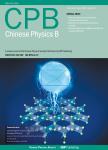Active Brownian particles simulated in molecular dynamics
Active Brownian particles simulated in molecular dynamics作者机构:Faulty of Civil Engineering and MechanicsJiangsu UniversityZhenjiang 212013China Faculty of PhysicsGuangdong-Technion-Israel Institute of TechnologyShantou 515063China Department of Mechanical and Aerospace EngineeringHong Kong University of Science and TechnologyHong KongChina Department of MathematicsHong Kong University of Science and TechnologyHong KongChina
出 版 物:《Chinese Physics B》 (中国物理B(英文版))
年 卷 期:2020年第29卷第9期
页 面:222-232页
核心收录:
学科分类:07[理学] 0805[工学-材料科学与工程(可授工学、理学学位)] 0704[理学-天文学] 0702[理学-物理学]
基 金:Project supported by Hong Kong RGC CRF,China(Grant No.C1018-17G) GRF,China(Grant No.16228216) Jiangsu University Foundation(Grant No.20JDG20)
主 题:active Brownian particle diffusion confinement boundary
摘 要:In the numerical studies of active particles, models consisting of a solid body and a fluid body have been well established and widely used. In this work, such an active Brownian particle (ABP) is realized in molecular dynamics (MD) simulations. Immersed in a fluid, each ABP consists of a head particle and a spherical phantom region of fluid where the flagellum of a microswimmer takes effect. Quantitative control over the orientational persistence time is achieved via an external stochastic dynamics. This control makes it possible to validate ABP s diffusion property in a wide range of particle activity. In molecular description, the axial velocity of ABP exhibits a Gaussian distribution. Its mean value defines the active velocity which increases with the active force linearly, but shows no dependence on the rotational diffusion coefficient. For the active diffusion coefficient measured in free space, it shows semi-quantitative agreement with the analytical result predicted by a minimal ABP model. Furthermore, the active diffusion coefficient is also calculated by performing a quantitative analysis on the ABP s distribution along x axis in a confinement potential. Comparing the active diffusion coefficients in the above two cases (in free space and in confinement), the validity of the ABP modeling implemented in MD simulations is confirmed. Possible reasons for the small deviation between the two diffusion coefficients are also discussed.



